Cucumber (Cucumis sativus L.), is a monoecious annual vegetable belonging to the Cucurbitaceous family with creeping (trailing) vines up to 5 cm long. The leaves are triangular-ovate and 8-14 cm long; flowers are staminate and pistillate, occasionally hermaphrodite, about 2-3 cm across. The fruits are usually cylindrical, 10-30 cm long, more or less rounded in cross-section.

Cucumber Production Management
Recommended Varieties
Pilmaria (UPL Cu-6). A highly gynoecious, open-pollinated, pickling variety. Fruits are blocky in shape, dark green in color, stippled with whitespines. It matures in 40 days during the dry season with an average yield of 26.5 t/ha, and 42 days during the wet season with 27.5 t/ha. It is tolerant to watermelon mosaic virus, downy mildew, and fusarium wilt and moderately resistant to leaffolders, aphids, and beetles.
Bituin (UPL Cu-11). A high yielding open-pollinated, slicing variety. It is strongly gynoecious and fruits are medium to long (15-18 cm), uniformly dark green in color with white spines. It has a potential yield ranging from 25-35t/ha. It is moderately tolerant to downy mildew, cucumber mosaic virus, and powdery mildew. The most common insect pests are aphids, leaffolders, and squash beetles.
Soil and Climatic Requirements
Cucumber is a warm season grown year-round locally. The optimum temperature for growth is about 300C, while the optimum night temperature is 18-210C. The soil should be fertile and rich in organic matter with a soil pH ranging from 6.5 to 7.5.
Land Preparation
Prepare the field at least one month before planting. Follow each plowing with harrowing and allow weed seeds to germinate between each plowing. Prepare furrows 0.75cm to 1m apart. For wet season cropping, prepare raised beds instead of furrows. One week before planting, make holes 30 cm apart and apply well-decomposed animal manure at the rate of 200 g/hill. Mix the manure thoroughly with soil.
Planting
Sow 3-4 seeds/hills and cover with a thin layer of soil. About 2-3 kg of seeds are required for one hectare. Irrigate the field right after sowing. Five to seven days after germination, rogue excess seedlings and maintain only two plants/hill.
Fertilization
Apply 10-15 g (1-1.5 tbsp) of complete fertilizer (14-14-14) per hill at planting. Side-dress three weeks later by mixing two parts urea (46-0-0) and one part muriate of potash (0-0-60). Apply 10 g (1 tbsp) of this mixture to each hill in bands. A third side-dressing can be done (optional) using the same rate of mixture depending on the maturity of the variety.
Trellising
Ipil-ipil posts spaced 3-4 m apart are laid out in the field. GI wire # 16 can be used to connect the poles along each furrow. Abaca twine or synthetic straw can be used for vine training.
Water Management
During the dry season, water regularly every 10-14 days depending on the soil type and weather condition. Avoid too much water.
Enhancement of Fruit Set
Enhance fruit set by introducing one to two colonies of honeybees per hectare, as insect pollinators. Spray late in the afternoon. Use pesticides that are safe to insect pollinators.
Harvesting
Harvest slicing varieties at 38-45 days after planting. Harvest gherkins (pickling type) 3-5 days earlier. Harvest every other day or when necessary. Remove all deformed fruits to promote the production of normal fruits.
Pest and Disease Management
Diseases/ Insect Pest
Beetles
Leaf folders
Aphids
Thrips, mites
Powdery mildew
Downy mildew
Use off-baring and hilling-up to suppress weed growth in relatively large plantations. Regular spot weeding is recommended for backyard gardening.
Most recommended varieties are tolerant to common pests and diseases. However, if chemical control is necessary, use the recommended pesticides for specific pests as indicated above. Alternative control measures include: 1) adjustment in planting dates (avoid planting between February and April to minimize thrips and mites population); 2) use of resistant varieties; 3) proper sanitation (includes burning of infected plant parts); 4) crop rotation; 5) use of botanical pesticides; and 6) use of other biological control methods (e.g. Trichogramma).
Source: Cucumber Production Guide. Info. Bulletin No. 152/1999 PCARRD – https://www.darfu4b.da.gov.ph
Image: growfruitandveg.co.uk
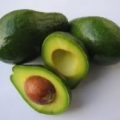
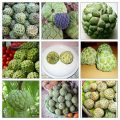

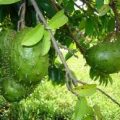
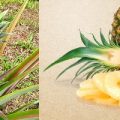
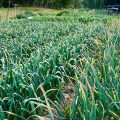

where is your cultivation practices?